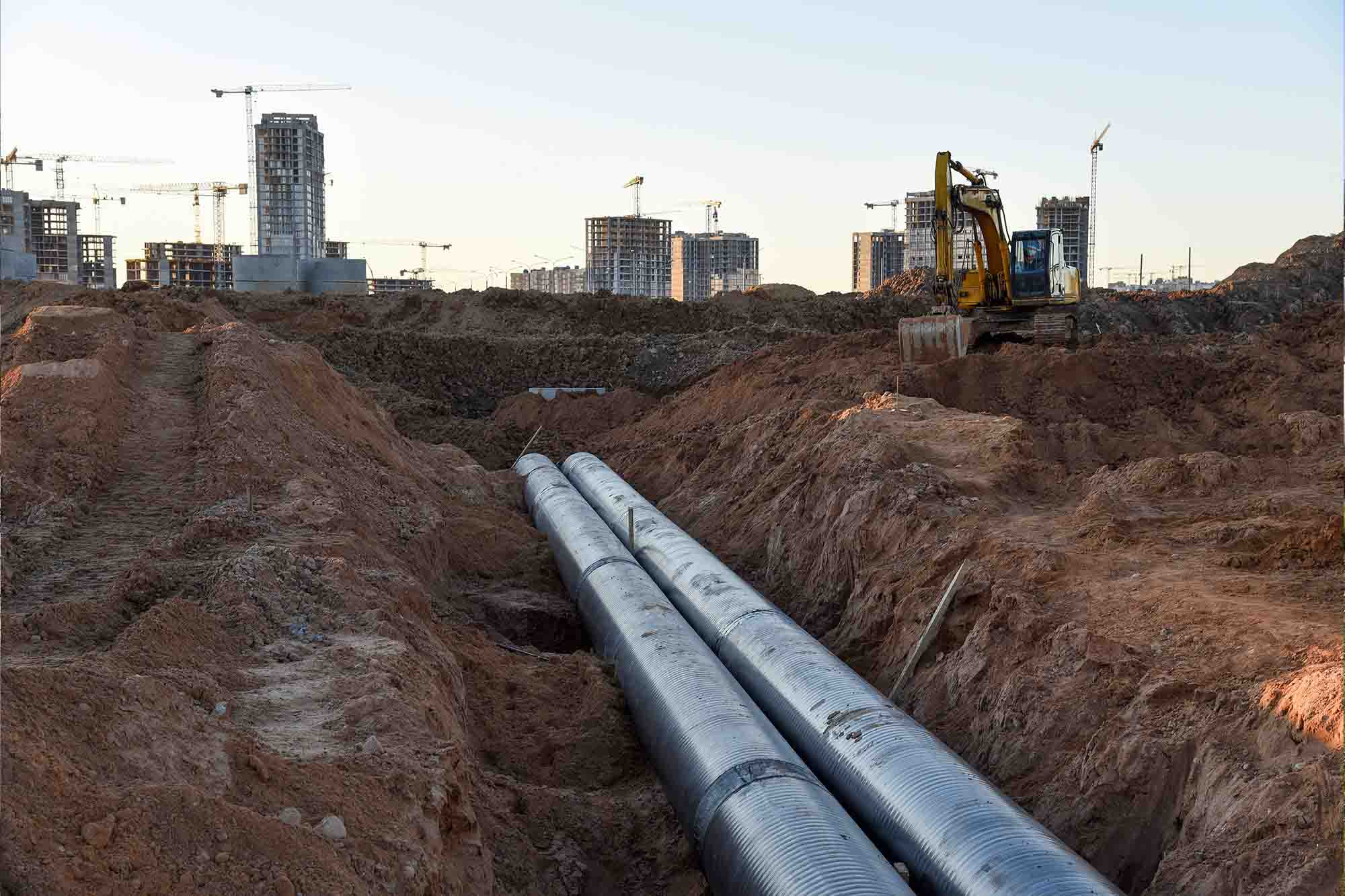Guide to Selecting Cast Iron Pipe Cutting Tools
2025-07-28 11:22:51 hits:0
I. Matching Cutting Tools to Pipe Specifications: The Core Logic of Precise Selection
The quality of cast iron pipe cutting directly affects the sealing performance and structural strength of subsequent installations, and tool selection must be strictly adapted to the pipe wall thickness and diameter. Cast iron pipes of different specifications have differences in material properties and stress states. Blindly using universal tools can easily lead to problems such as uneven cutting surfaces and pipe cracking. Below are targeted cutting tool solutions based on our product characteristics.
(1) Thin-Walled Cast Iron Pipes (≤3mm Wall Thickness): Prioritize Fine Operation to Ensure Smooth Cuts
Thin-walled cast iron pipes (commonly used in DN50-DN100 civil water supply pipes) require avoiding excessive force during cutting to prevent deformation. Two tool combinations are recommended:
Manual Pipe Cutter
Choose a ratchet-type manual pipe cutter with rolling blades (e.g., our certified TC-300 model). Its progressive cutting method applies pressure evenly, with a cut perpendicularity error of ≤0.5°. When operating, use our patented guiding positioning ring—slide it 3cm from the pipe end and calibrate the cutting position via laser scale lines to reduce manual marking errors.
Compact Reciprocating Saw
For rapid batch cutting, use a compact reciprocating saw (weight ≤2.5kg) equipped with a 6TPI tungsten carbide blade. Control the saw blade stroke to 15-20mm to avoid vibration-induced cracking. Pair with our anti-slip pipe clamp (adjustable clamping force: 50-80N, suitable for thin-walled pipes).
Applicable Scenarios: Indoor plumbing renovations, precision instrument tubing cuts, and other applications requiring high cut accuracy.
(2) Thick-Walled Engineering Pipes (5-10mm Wall Thickness): Prioritize Efficiency with Durability
Thick-walled cast iron pipes (used in municipal engineering and industrial sewage systems, DN200-DN400) have dense materials and high hardness (HB200-250), requiring high-power tools with wear-resistant blades:
Angle Grinder + Diamond Composite Blade
Use an angle grinder (power ≥1200W, speed 8000-10000r/min) with our co-developed diamond composite blade (125mm diameter, 2.5mm thickness). The 80-mesh diamond particles boost cutting efficiency by 40% vs. standard grinding wheels, with one blade cutting ~50 DN300 pipes. Cut in three progressive circumferential stages (≤3mm depth each) to avoid overheating-induced annealing.
Tool Adaptation Advantages
The diamond blade’s thermal conductivity is 3x that of traditional silicon carbide blades, rapidly dissipating heat to prevent edge 钝化. All blades undergo 100+ cutting tests to ensure compatibility with thick-walled pipes (carbon content 3.2%-3.6%).
Applicable Scenarios: Municipal pipe networks, sewage treatment plants, and large-scale industrial installations.
(3) Large-Diameter Pipes (≥8 inches): Professional Equipment for Safety
Cutting large-diameter cast iron pipes (DN200+, used in urban main water pipes and industrial pipelines) involves two challenges: securing heavy pipes and ensuring flange connection flatness. Recommended solutions:
Hydraulic Pipe Cutter
Our HY-800 hydraulic cutter features an annular blade holder (8-24 inch capacity) with hydraulic feed (max pressure 30MPa) and a cutting speed of 3-5cm/min. For ≥12-inch pipes, activate the dual-cylinder synchronous drive to prevent elliptical deformation.
Pipe End Pre-Grooving
Pre-groove 10cm from the pipe end (2mm depth) to guide blade positioning. This process ensures a flatness error ≤0.3mm, meeting flange connection requirements in GB/T 13295-2013 ("Ductile Iron Pipes, Fittings and Accessories for Water and Gas Supply")—see Chapter 3.2 of our "Large-Diameter Cast Iron Pipe Processing Guide" for case studies.
Applicable Scenarios: Urban infrastructure, large industrial plant piping, and heavy engineering projects.
II. Balancing Efficiency and Pipe Performance: Data-Supported Optimization
(1) Efficiency Improvement Data
For DN200 cast iron pipes (8mm wall thickness), tool performance comparisons are as follows:
Cutting Tool | Cutting Time per Pipe | Cut Qualification Rate | Blade Replacement Frequency |
Hydraulic Pipe Cutter | 2 min 15 sec | 99.2% | 0.1 times/pipe |
Angle Grinder + Diamond Blade | 3 min 40 sec | 96.5% | 0.3 times/pipe |
Traditional Grinding Machine | 5 min 30 sec | 88.7% | 0.8 times/pipe |
Data shows adapted tools improve efficiency by ≥30% and reduce rework rates to <1%.
(2) Key Precautions to Avoid Performance Loss
Speed Control
For thick-walled pipes, limit angle grinder speed to 4500-6000r/min. Exceeding 6000r/min raises pipe end temperatures above 250°C, decomposing pearlite structure and reducing hardness by 15%-20%—compromising flange bolt clamping force (required compressive strength ≥200MPa).
Cooling Requirements
For continuous cutting of ≥5 DN200+ pipes, use our water mist cooling system (20-30ml/min flow) to force-cool the blade and prevent overheating-induced performance degradation.
III. Customized Cutting Services: End-to-End Support
(1) Prefabricated Cutting: Precision and Efficiency
For bulk orders, we offer pre-shipment fixed-length cutting:
CNC plasma cutting (±0.1mm accuracy) ensures cut surface roughness Ra≤12.5μm.
Each pipe includes a QR code for traceability—scan to view parameters (blade model, pressure, cutting time) and inspection reports, facilitating project acceptance.
This service reduces on-site cutting time by 40%+, ideal for standardized projects.
(2) Supporting Toolkit: One-Stop Solution
Customers ordering ≥100 tons receive a special cutting tool set with:
Blades for all specifications (3 manual cutter blades, 2 diamond composite blades)
Multi-functional pipe clamp (50-300mm range)
Power tool battery extender (8-hour angle grinder runtime)
Cut inspection gauge (0.01mm accuracy dial indicator)
All toolkit components undergo compatibility testing with our pipes to avoid third-party tool mismatches.
Conclusion
Selecting cast iron pipe cutting tools requires considering engineering scenarios, efficiency, and installation standards. We uphold "cutting as a craft" and provide full support from tool selection to on-site guidance. For tailored cutting plans, contact our technical hotline for a customized manual.

 en
en  fra
fra  de
de  ru
ru  ara
ara  gle
gle  it
it  jp
jp  kor
kor  th
th  zh
zh 



